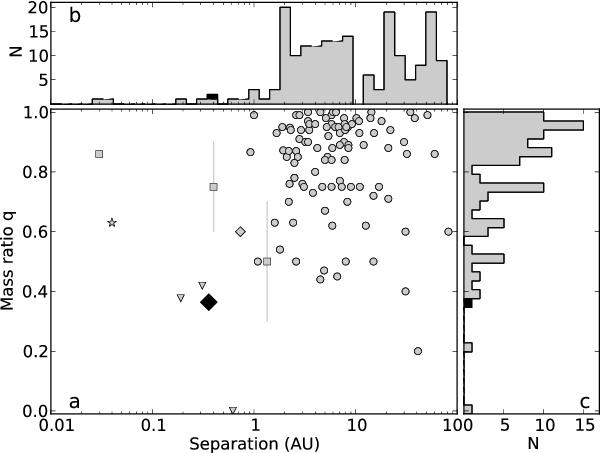Fig. 5

Separations and mass ratios of very low-mass binaries. Panel a) shows the mass ratio as a function of separation for 108 very low-mass binaries (M1 + M2 < 0.2 M⊙, Sect. D). The location of the DE0823−49 binary is indicated with a black diamond and uncertainties are smaller than the symbol size. Binaries with separations <100 AU are shown, where the separation is either given by the the orbit’s semimajor axis or, in most cases, the actual observed projected separation of directly imaged binaries. Error bars are not shown for clarity of display. Symbols indicate the respective detection method: diamonds, astrometry; squares, radial velocity; triangles, gravitational microlensing; star, eclipse photometry; circles, direct imaging or spectroscopy. For radial velocity systems with unknown mass ratio, the range of possible values is indicated. Panel b) shows the distribution in separation. The two smallest separation binaries are a short period spectroscopic binary (Basri & Martín 1999) and an eclipsing binary (Stassun et al. 2006). Panel c) shows the distribution in mass ratio. The two systems with mass ratios smaller than DE0823−49 are a planetary mass companion detected through microlensing (Kubas et al. 2012) and a directly imaged companion to a young brown dwarf (Chauvin et al. 2004).
Current usage metrics show cumulative count of Article Views (full-text article views including HTML views, PDF and ePub downloads, according to the available data) and Abstracts Views on Vision4Press platform.
Data correspond to usage on the plateform after 2015. The current usage metrics is available 48-96 hours after online publication and is updated daily on week days.
Initial download of the metrics may take a while.


